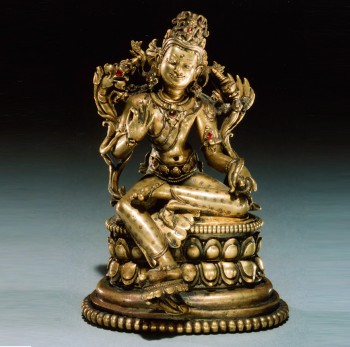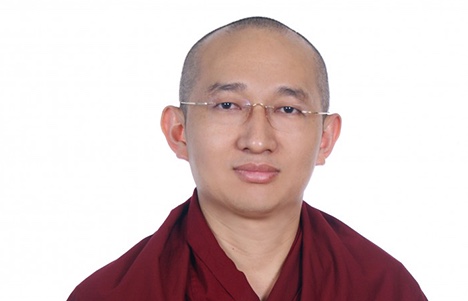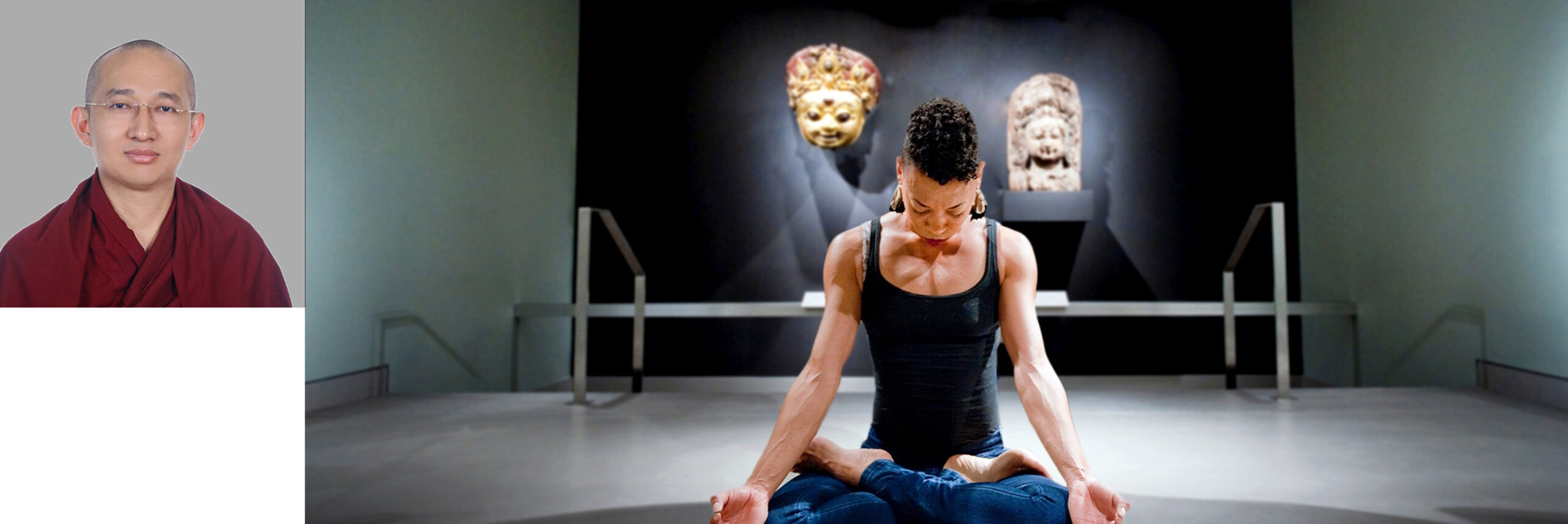
Khangser Rinpoche
Mindfulness Meditation
Wednesday, May 22, 2019
1:00 PM–1:45 PM
Related Artwork

Richly ornamented figures such as this one, which is adorned with more jewelry than clothing, represent the perfected beings—gods and goddesses, buddhas and bodhisattvas—of both Hindu and Buddhist traditions. Their simple Indian dhotis or sarongs are eclipsed by jewel-encrusted crowns, necklaces, and bracelets. Drawn from the traditional garb of Indian royalty, this attire reflects these beings’ noble aspirations and spiritual glory. Their opulent ornamentation, coupled with their youthful beauty, symbolizes their inner perfection and purity.
A classic example of the Buddhist perfected or the bodhisattva, this image of Maitreya typifies the Indian models that spread into Tibet and beyond. In particular, the proportions and luxuriousness of the jewelry and clothing, conventions developed during the Pala period (750″“1150), inspired the artistic representations of bodhisattvas throughout the Himalayas, particularly in Tibet. The regal garb typical of the bodhisattva is exaggerated and enlivened in this sculpture by the inlays of copper and silver, which evoke lavish robes. The fabric wrapped around the waist of this deity is edged with copper and dotted with inlays of copper and silver that brighten the sculpture. Typical of fine metal sculptures from this period, such inlays cover the figure: the eyes, lips, forehead dot (urna, one of the Buddha’s auspicious marks), and even the anklets are all marked with inlays or drops of colored metal. Further splashes of color are provided by inlays of glass backed by colored foil.
Theme: Compassion
Cultivating compassion can be the best antidote to selfishness. With the inspiration of the bodhisattva Maitreya, the Khangser Rinpoche teaches how we can embody the giving and receiving of unconditional love through our physical practice, and learn to develop greater compassion for all those around us.
About the Mindfulness Meditation Podcast
The Rubin Museum of Art presents a weekly meditation session led by a prominent meditation teacher from the New York area, with each session focusing on a specific work of art. This podcast is recorded in front of a live audience, and includes an opening talk, a 20-minute sitting session, and a closing discussion. The guided meditation begins at 23:30.
If you would like to attend Mindfulness Meditation sessions in person or learn more, please visit our website at RubinMuseum.org/meditation.
This program is presented in partnership with Sharon Salzberg, the Interdependence Project and Parabola Magazine.


About the Speaker

The highly venerated 8th Khangser Rinpoche, Tenzin Tsultrim Palden, was born in Kathmandu, Nepal in May 1975. At the age of 5, he was recognized as the reincarnation of 7th Khangser Rinpoche, who was one of the three high lamas (Keutsang Rinpoche, Khangser Rinpoche, Phurchok Rinpoche) responsible for searching the 14th reincarnation of His Holiness the Dalai Lama.
Khangser Rinpoche started basic study of Buddhist philosophy in the Institute of Buddhist Dialectics, Dharamsala. Thereafter, he completed advanced Buddhist studies on sutra and tantra in Sera Jey Monastery, Karnataka and Gyuto Tantric Monastic University in India, where he obtained Geshe Lharampa (equivalent to a PhD) and a Doctorate Degree in tantra, both with highest honors among the top division.
His ancestors followed the Nyingma tradition for centuries. Since Rinpoche’s line of reincarnations is affiliated with the Gelug tradition, he possesses both precious heritages.
He has directly received a wealth of teachings on both tantra and sutra from many great Tibetan yogis and from spiritual teachers from the four major Tibetan Buddhist sects. Some of his teachers include His Holiness the 14th Dalai Lama, Kyabje Dilgo Kysentse Rinpoche, Lati Rinpoche, Khensur Lobsang Tsering, Khe Tsun Sangpo Rinpoche, and Choegye Trichen Rinpoche. The Rinpoche is a great scholar who has achieved mastery in both the Gelug and Nyingma Buddhist traditions.
Khangser Rinpoche currently serves as a professor teaching Buddhist philosophy at Sera Jey Monastic University, one of the three great Gelugpa Monastic Universities. In 2012, he established the Dipankara Buddhist Organization to to convey the practice of mind training all over the world.

